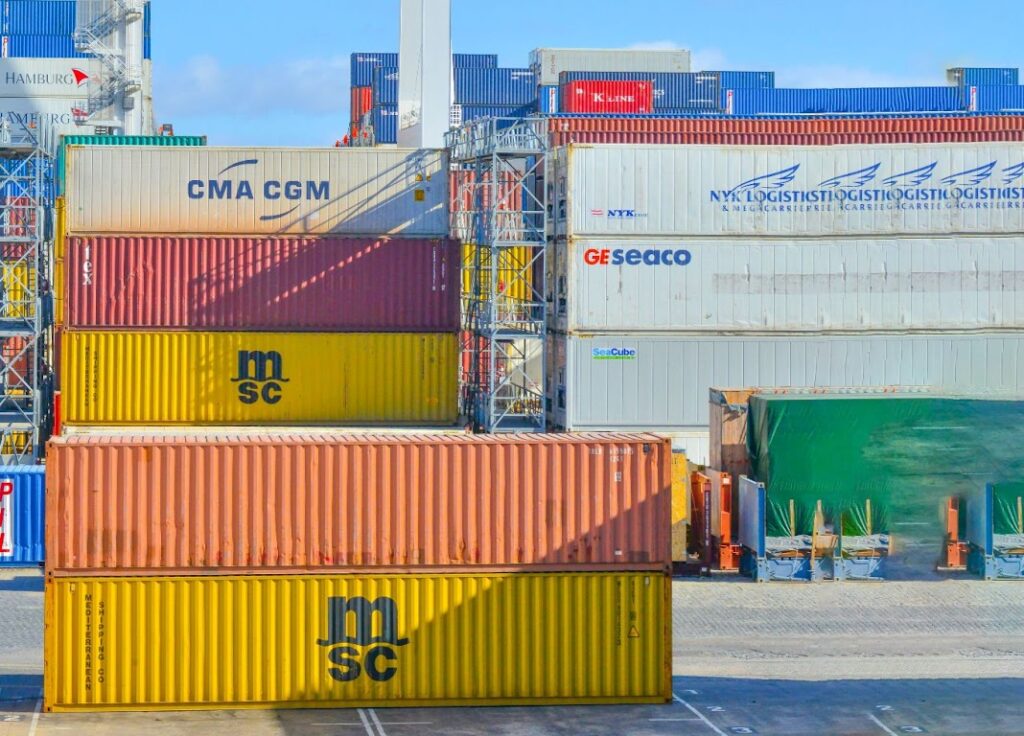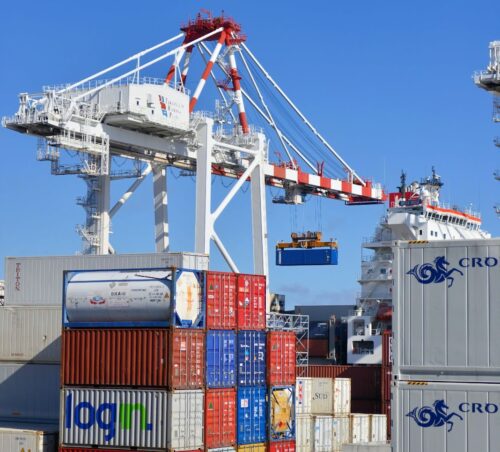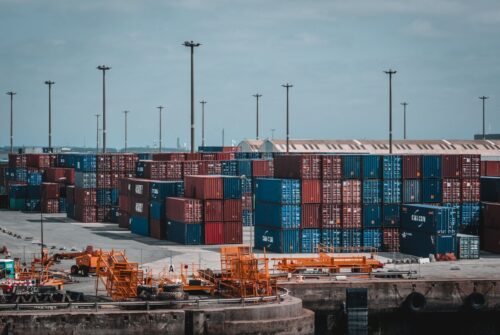Transloading vs Cross Docking: Definitions, Advantages, and How to Choose a Service

Navigating the complexities of the supply chain can be daunting for businesses looking to optimize their shipping performance.
At the heart of a modern supply chain are services like transloading and cross-docking, which are vital for moving shipments efficiently. Understanding the differences between these services and how they can enhance or hinder your operation is key to making an informed decision.
This article will introduce you to both concepts and help you decipher which service might be the most beneficial for your business and supply chain needs.
What Is Transloading?

Transloading is a service within the supply chain management system that involves transferring goods from one mode of transportation to another. For instance, shipping containers arriving by sea might be transferred onto rail cars or trucks at a transloading facility.
This method is particularly applicable to international shipments where goods travel via multiple modes of transport. Transloading allows for consolidating multiple shipments, which significantly reduces storage time and shipping costs while ensuring efficient outbound delivery.
What Is Cross Docking?
Cross-docking is a practice in supply network management that minimizes or eliminates the need to own a warehouse or contract for third-party warehouse space.
Goods are unloaded from an inbound truck or shipping containers at a cross-docking facility and directly loaded onto an outbound vehicle, with minimal or no storage in between. This method boosts supply chain efficiency because it allows for faster shipping and reduces labor costs associated with handling and storage.
Cross-docking facilities often operate as part of a third-party logistics provider‘s services, offering a quick turnaround for goods heading to multiple destinations.
What Are the Advantages of Transloading?

When considering transloading services, there are several key advantages to remember.
Efficiency in the Supply Chain
Transloading can enhance supply chain efficiency by utilizing more than one mode of transport, which may be more cost-effective or faster for reaching the end user.
This transportation process can also offer value-added services, such as customs clearance management and consolidation of goods, which streamlines the shipping process.
Available Storage
Transloading facilities allow for storing goods temporarily, which can be beneficial if there’s a need for long-term storage or if the final destination is not yet ready to receive the shipment.
This adds flexibility to the supply chain and can help businesses manage their inventory more effectively.
Lower Transportation Costs
By optimizing the transportation process and allowing for goods to be moved in multiple forms of transport, transloading can lead to reduced transportation costs.
This is particularly true for international shipments that might benefit from the intermodal transportation options trans-loading provides.
Fewer Complications With Customs
Transloading can simplify customs management, as goods can be processed and shrink-wrapped in specialized facilities for international expedited shipping.
This can reduce the time and complexity of clearing customs, leading to smoother supply chain management.
What Are the Drawbacks of Transloading?
However, there are some potential drawbacks to consider with transloading.
Shipping Delays
One possible downside is the potential for shipping delays. The transloading process requires goods to be moved from one transport mode to another, which could introduce delays if not appropriately managed. Transloading facilities must have excellent communication and coordination to minimize these risks.
Suitability of Goods
Not all goods are suitable for transloading. Certain products may require a more controlled environment than a transload facility can provide, or they may not be suited to being handled multiple times throughout the shipping process.
Potential for Theft or Damage to Goods
The more times goods are handled, the higher the risk of theft or damage. This is an inherent risk in transloading, as goods are moved and stored multiple times before reaching their final destination. While transloading facilities take measures to protect shipments, the increased handling can increase the likelihood of such incidents.
What Are the Advantages of Cross Docking?
Cross-docking can significantly streamline the supply chain process, presenting a variety of advantages for businesses looking to optimize their shipping and handling operations.
No Need for Storage Space
One of the most prominent advantages of cross-docking is eliminating the need for storage. Since products are directly transferred from the inbound to the outbound transportation, there is little to no requirement for warehouse space. This can result in substantial savings on storage costs and helps prevent inventory from becoming stagnant.
Lower Transportation Costs
Cross-docking can lead to lower transportation costs by consolidating shipments more efficiently. Smaller loads can be combined into a single transport mode, such as a full truckload, which is more cost-effective than several smaller, less-than-truckload shipments.
Lower Labor Costs
Cross-docking can significantly cut labor costs by reducing the need for picking, packing, and storing goods. It requires less manual handling of goods, saving labor time and reducing the need for extensive workforce training and management.
Reduced Risk of Damage or Theft
Goods are less likely to be damaged or stolen when they spend less time in storage and handling. With cross-docking, products move quickly through the cross-docking facility. They are often monitored and handled by fewer parties, reducing the risk of damage or theft during shipping.
Save Time & Money
Overall, cross-docking can save businesses both time and money. By speeding up the delivery process and eliminating unnecessary steps, companies can enjoy faster shipping times, improving customer satisfaction and giving a competitive edge in the marketplace.
What Are the Drawbacks of Cross Docking?
However, cross-docking has challenges and potential drawbacks that need to be carefully considered.
Significant Coordination and Planning Required
The success of cross-docking hinges on precise coordination and planning. The timely arrival of inbound shipments and the immediate transfer to outbound trucks demand excellent communication and a well-orchestrated supply chain management system. This level of detail can be resource-intensive to establish and maintain.
Terminal Construction Costs Time & Money
Setting up a cross-docking facility can be costly and time-consuming. The initial investment in the infrastructure, technology, and systems needed for an efficient cross-dock operation may be significant, which might be feasible only for some businesses.
Large Volume of Goods Necessary for Cost Effectiveness
To truly benefit from cross-docking, a business typically needs a large volume of goods moving through the supply chain. With sufficient volume, the cost savings from cross-docking may be realized, making it less effective for smaller operations.
Transloading vs Cross Docking: Which Service Do You Need?
In comparing transloading and cross-docking, it’s evident that each service has its unique set of benefits and limitations. Specific business needs and operational capabilities should guide the choice between the two.
Consideration 1: Volume of Goods
Consider the volume of your goods. Cross-docking requires high volume for cost-effectiveness, while transloading can be more flexible with varying shipment sizes.
Consideration 2: Storage Needs
Evaluate your storage needs. If you require storage, transloading offers this capability, whereas cross-docking is designed to minimize storage use.
Consideration 3: Speed of Delivery
Determine your speed of delivery requirements. Cross-docking provides a quicker turnaround, which can be critical for time-sensitive goods, while transloading might be slower due to additional handling.
Final Thoughts
Understanding the nuances of transloading vs cross-docking will help you align your shipping strategy with your business goals. Both services can reduce transport costs and improve supply chain efficiency, but the right choice depends on your specific operational needs.
Take the time to assess your volume, storage, and delivery speed requirements before deciding. With the right approach, you can enhance supply chain management, cut costs, and maintain a competitive edge in the modern marketplace.
Whatever your next step is, remember that the goal is always to move shipments in the most efficient and cost-effective method possible.
